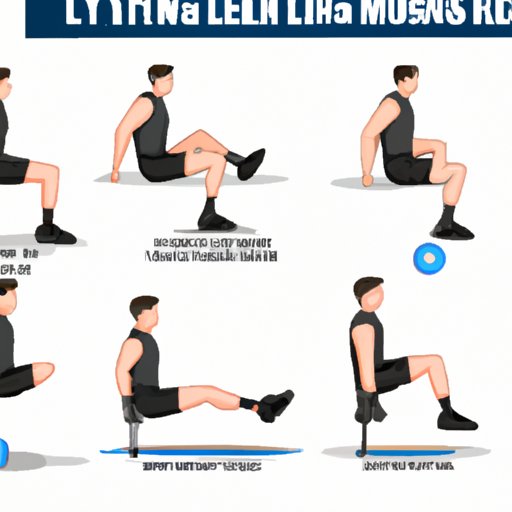
Introduction
Are you struggling to achieve the muscle growth you desire in your legs? It can be frustrating when you consistently work out, but you don’t see the results you want. In this article, we will explore seven proven strategies to help you get bigger legs.
Creating a leg workout routine
When it comes to building bigger legs, having a leg workout routine that targets different muscle groups is essential. Squats, deadlifts, lunges, and leg presses are great exercises to tone and strengthen your legs. When designing your routine, consider the number of sets and reps you should do and how to progressively overload your muscles over time.
Incorporating more cardio activities
Cardio is essential for burning fat and toning legs. Recommended cardio exercises include running, cycling, and swimming. Incorporating a range of cardio exercises and routines that include both high-intensity interval training (HIIT) and steady-state cardio will help keep your workouts dynamic and challenging.
Eating the right types of food
Protein-rich foods are crucial for providing the necessary nutrients for muscle growth. Other foods that support muscle growth include complex carbohydrates and healthy fats. Consistently eating a balanced diet that contains enough calories will support muscle growth.
Importance of stretching and practicing good form
Stretching exercises and routines will help prevent injury and improve muscle flexibility. Good form during leg exercises is important to maximize muscle growth and avoid injury. Pay attention to proper form and make necessary adjustments as needed.
Including resistance band and bodyweight exercises
Resistance band and bodyweight exercises can help build leg muscles through a mix of resistance and weight-bearing movements. Incorporating exercises such as squats and lunges using resistance bands and bodyweight exercises like squats, lunges, and calf raises will help build stronger legs.
Using supplements
Supplements like creatine, BCAAs, protein powders, and glutamine are specifically designed to target muscle growth. Recommended dosages and timing of supplements vary, so research what supplements are right for you and consult with a healthcare professional before taking them.
Highlighting the importance of rest and recovery
Rest is essential for muscle growth and injury prevention. Getting enough sleep, practicing relaxation techniques, and taking active rest days (i.e., stretching, light cardio, or yoga) are all ways to promote recovery and prevent fatigue.
Conclusion
Getting bigger legs can be challenging, but there are proven strategies you can employ to achieve your desired results. Consistently working on your leg workout routine, incorporating cardio exercises, eating a balanced diet, and taking necessary supplements can all help. Don’t forget to include stretching and bodyweight exercises, take enough rest, and practice good form for optimal results.




